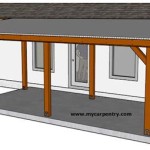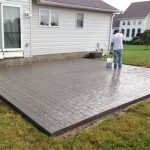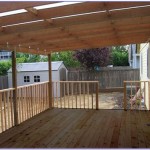The Perfect 5-Foot Patio Umbrella Base: Standard Sizes
Choosing the right base for a 5-foot patio umbrella is crucial for stability and safety. An insufficient base can lead to the umbrella tipping over, potentially causing damage or injury. This article explores standard base sizes suitable for 5-foot umbrellas, along with factors influencing the appropriate choice.
Key Considerations for Choosing a Base
Several factors impact the required weight and size of a patio umbrella base. These include the umbrella's size and material, the typical wind conditions in the location, and the base material's density.
Umbrella Size and Material
A 5-foot umbrella is considered small to medium-sized. While its smaller surface area catches less wind compared to larger umbrellas, an adequate base is still necessary to prevent tipping. The umbrella's material also plays a role. Heavier materials like wood or metal require a more substantial base than lighter materials like polyester.
Wind Conditions
Locations experiencing frequent high winds necessitate heavier bases. A lightweight base suited for a calm patio might be insufficient in a windier environment. Considering the typical wind conditions where the umbrella will be used is essential for choosing an appropriately weighted base.
Base Material and Density
Patio umbrella bases are available in a variety of materials, including concrete, resin, plastic, and metal. The material's density affects its weight and stability. For example, a compact concrete base can provide significant weight, while a larger resin base might offer comparable stability.
Standard Sizes and Weights
While there's no single "standard" size for a 5-foot umbrella base, some weight ranges and dimensions provide a practical starting point.
Weight Recommendations
A general recommendation for a 5-foot umbrella is a base weighing between 25 and 35 pounds. This weight range often provides sufficient stability in moderate wind conditions. However, for locations with stronger winds, a heavier base of 40 pounds or more may be required.
Typical Dimensions
Base dimensions vary depending on the shape and material. Common shapes include round, square, and rectangular. A round base might have a diameter of 18 to 24 inches, while a square base could measure 16 to 20 inches per side. Rectangular bases offer varying lengths and widths.
Material-Specific Considerations
Different base materials come with their own set of advantages and disadvantages, impacting the appropriate size and weight.
Concrete Bases
Concrete bases are renowned for their high density and excellent stability. They are ideal for windy areas and can be less expensive than other options. However, they can be heavy and difficult to move.
Resin Bases
Resin bases offer a balance of weight and portability. They are often designed with aesthetic appeal and can be lighter than concrete, making them easier to reposition. However, they might not be suitable for extremely windy conditions.
Metal Bases
Metal bases, typically made of steel or cast iron, offer durability and stability. They can be designed with decorative elements to complement patio furniture. However, they can be prone to rust if not properly treated.
Plastic Bases
Plastic bases are the lightest option and are generally less expensive. However, they are not recommended for outdoor use, especially in windy areas, due to their lightweight nature and susceptibility to tipping.
Choosing the Right Base for Specific Needs
Consider the following scenarios and recommended base choices.
Standard Patio Use in Moderate Wind
For a standard patio setting with moderate wind, a resin or concrete base weighing between 25 and 35 pounds is generally sufficient. Choose a size and shape that complements the patio furniture and available space.
Balcony or Elevated Deck
On a balcony or elevated deck, stability is paramount. Opt for a heavier concrete base, ideally weighing 40 pounds or more, to ensure the umbrella remains secure in windy conditions.
Poolside Use
For poolside use, a resin base is often preferable to concrete due to its lighter weight and easier mobility. Choose a base with a wide footprint and a non-slip surface for added stability on potentially wet surfaces.
Frequent Relocation
If the umbrella needs to be frequently moved, a resin or metal base with wheels is recommended. Ensure the base is still heavy enough to provide stability when the umbrella is in use, even with the added mobility feature.
Selecting the right base size and weight for a 5-foot patio umbrella involves considering factors like wind conditions, the umbrella’s material, and the base material's density. By carefully assessing these factors and understanding the available options, one can ensure the umbrella's stability and prevent accidents.

The Ultimate Umbrella Size Guide You Are Looking For

The 3 Best Patio Umbrellas And Stands Of 2024 Reviews By Wirecutter

The Ultimate Patio Umbrella Buyers Guide

Patio Umbrella Size Guide Midtown Umbrellas

Patio Umbrella Size Guide Midtown Umbrellas

The 3 Best Patio Umbrellas And Stands Of 2024 Reviews By Wirecutter

The 3 Best Patio Umbrellas And Stands Of 2024 Reviews By Wirecutter

The Ultimate Umbrella Size Guide You Are Looking For
The 11 Best Patio Umbrellas And Stands Of 2024

Mf Studio 10 X 6 6ft Rectangle Patio Table Umbrella Outdoor Market With Steel Ribs And Crank Handle Orange Com
Related Posts








